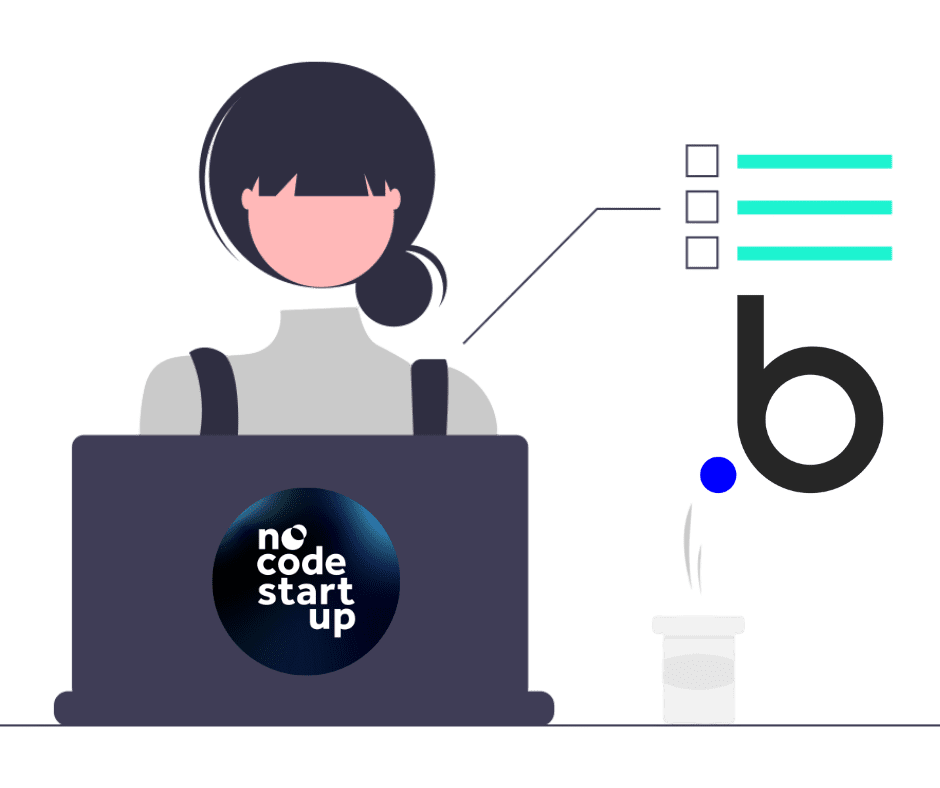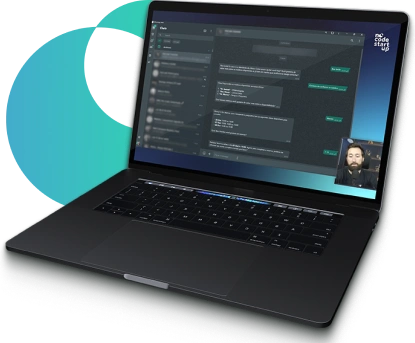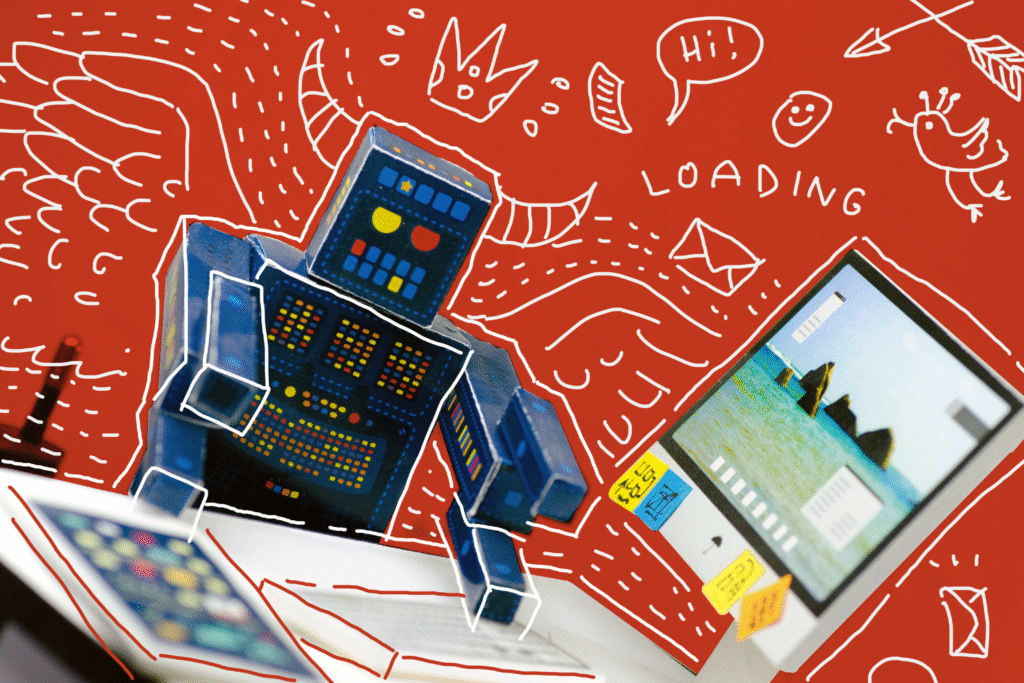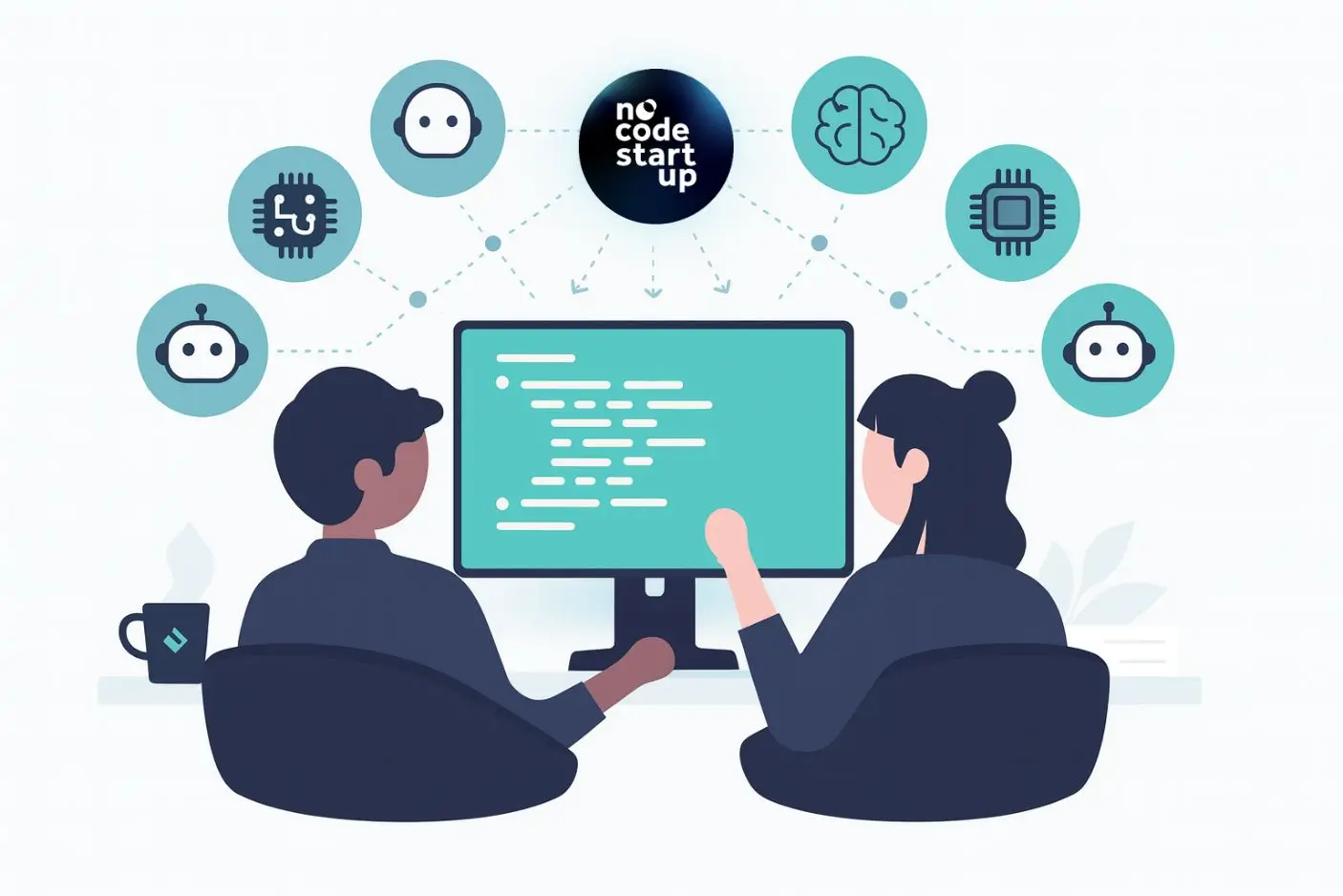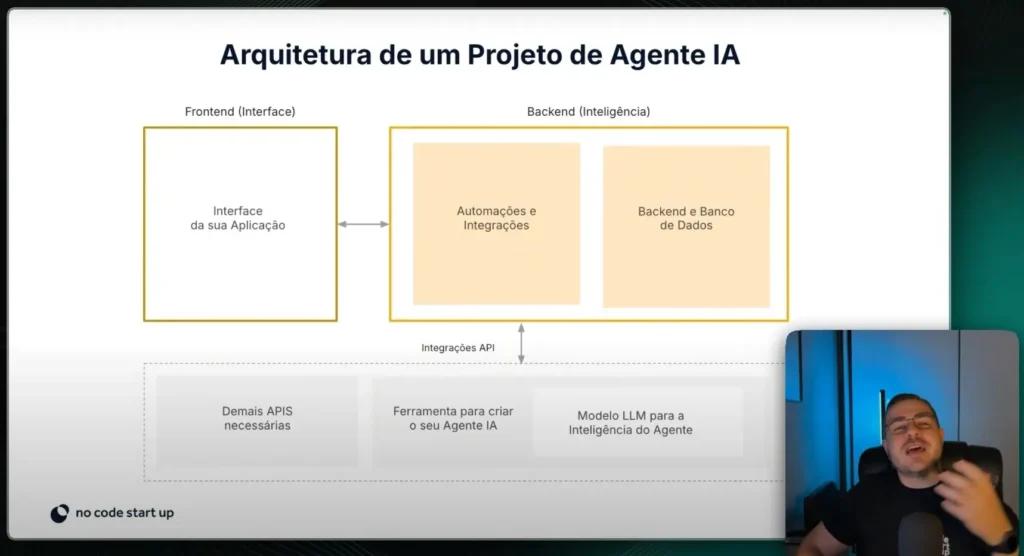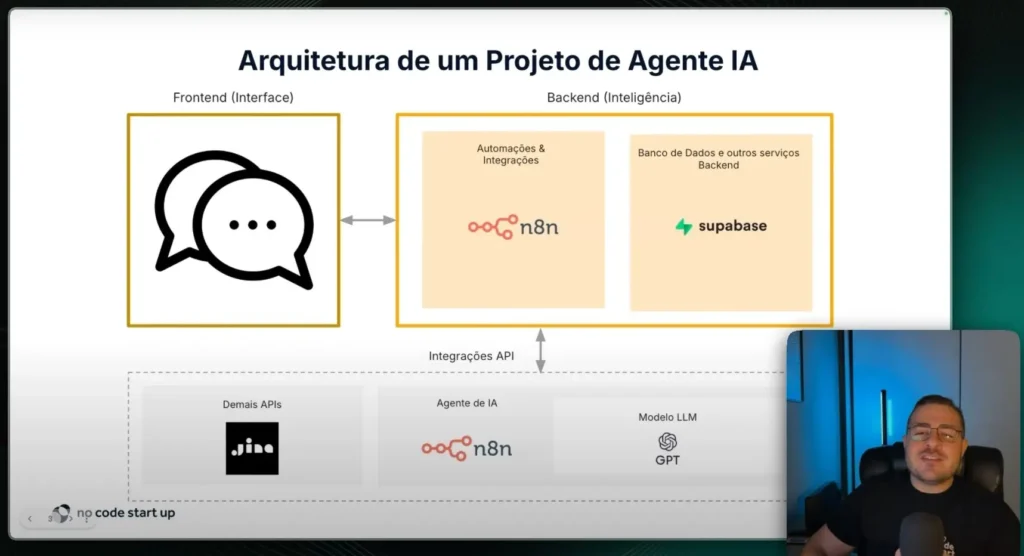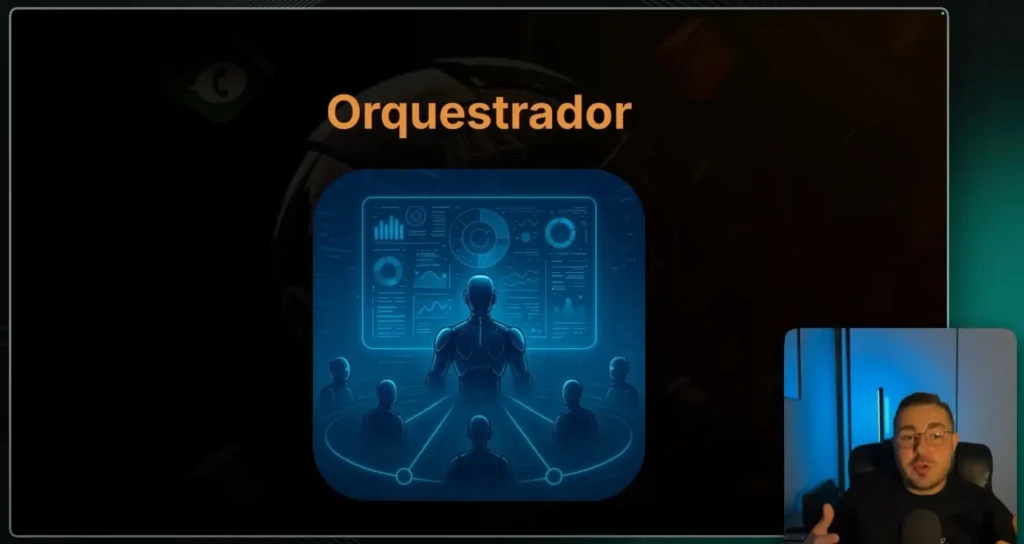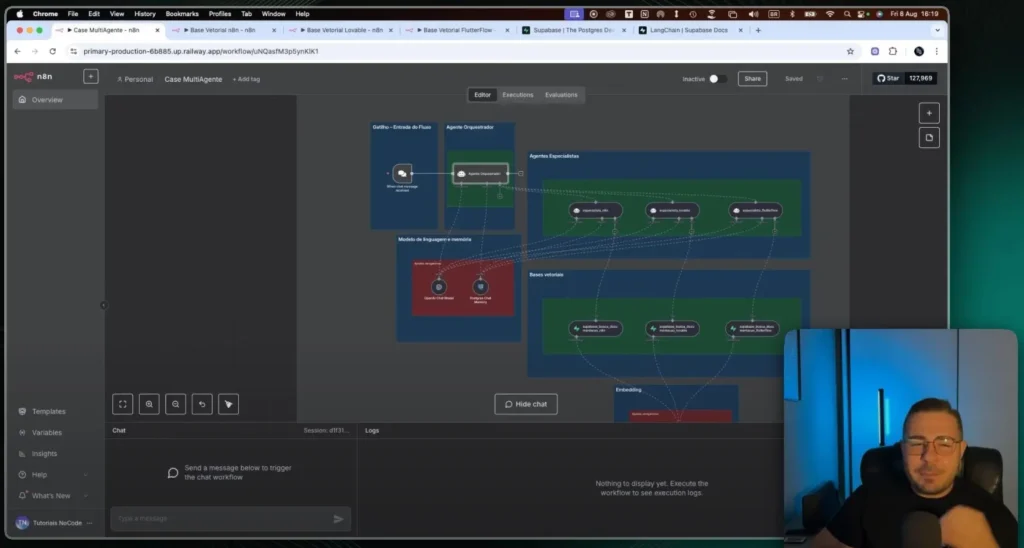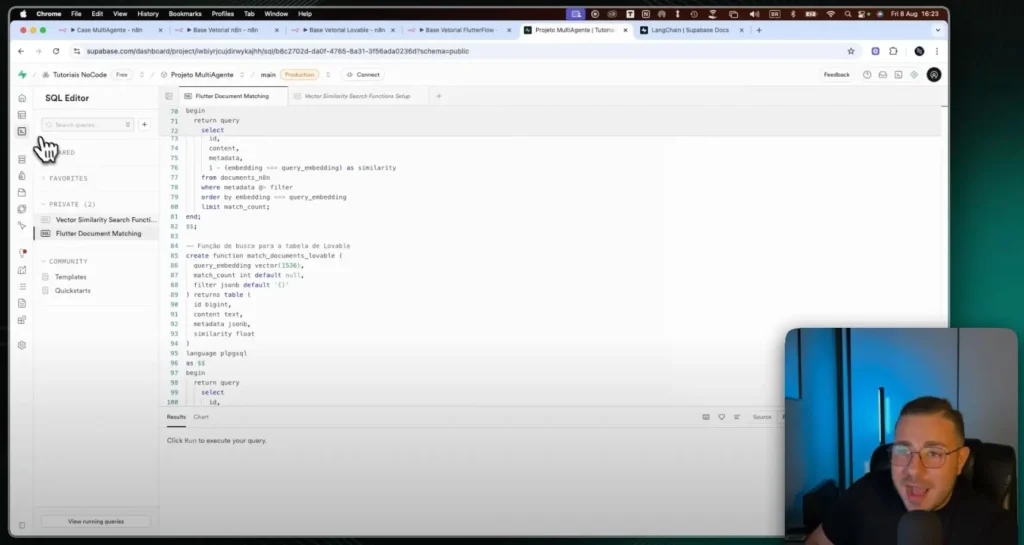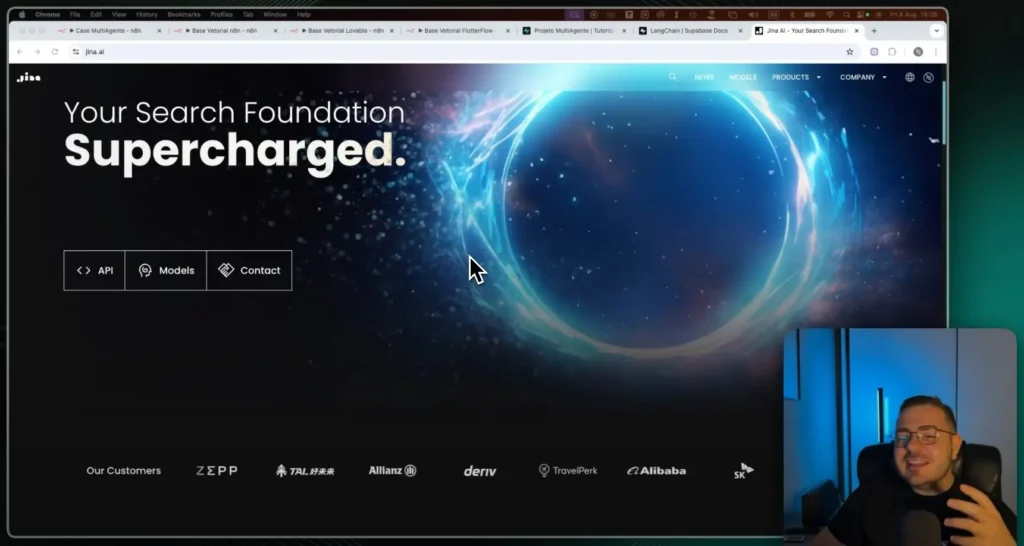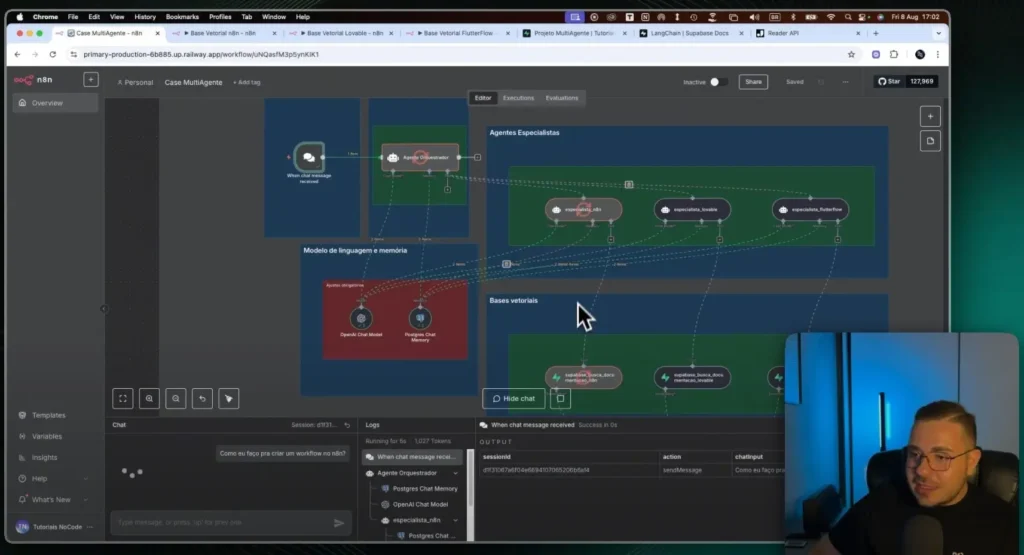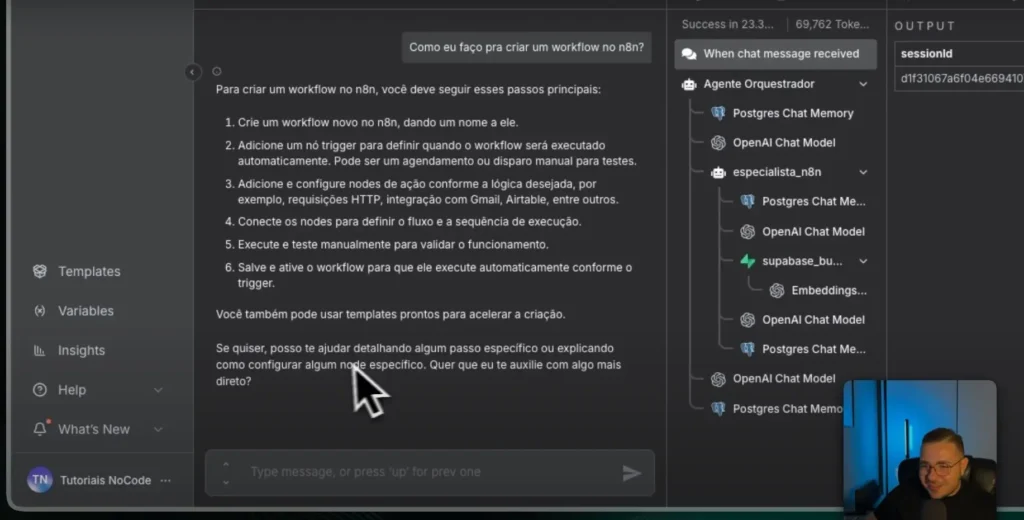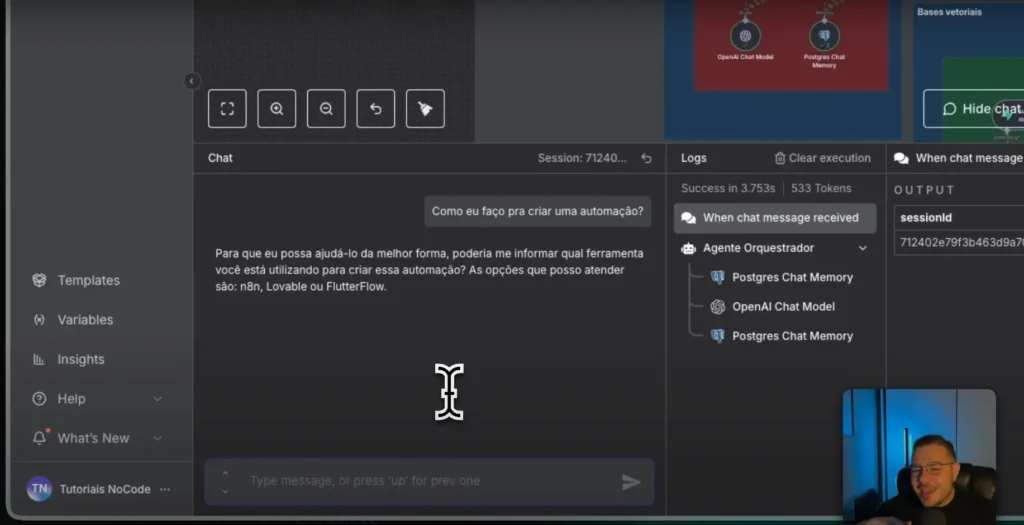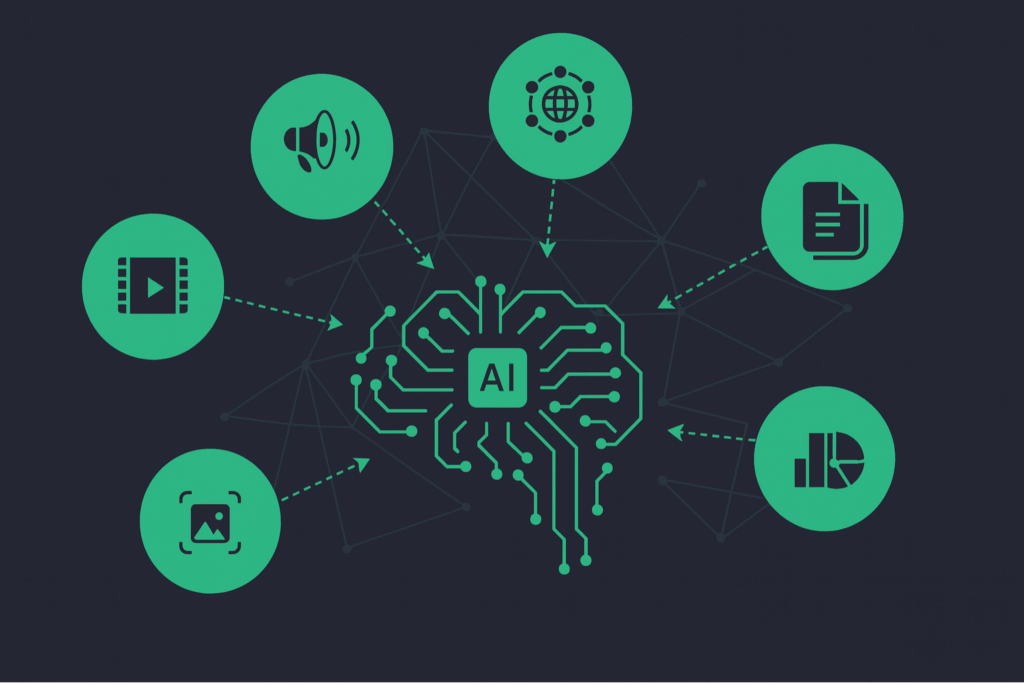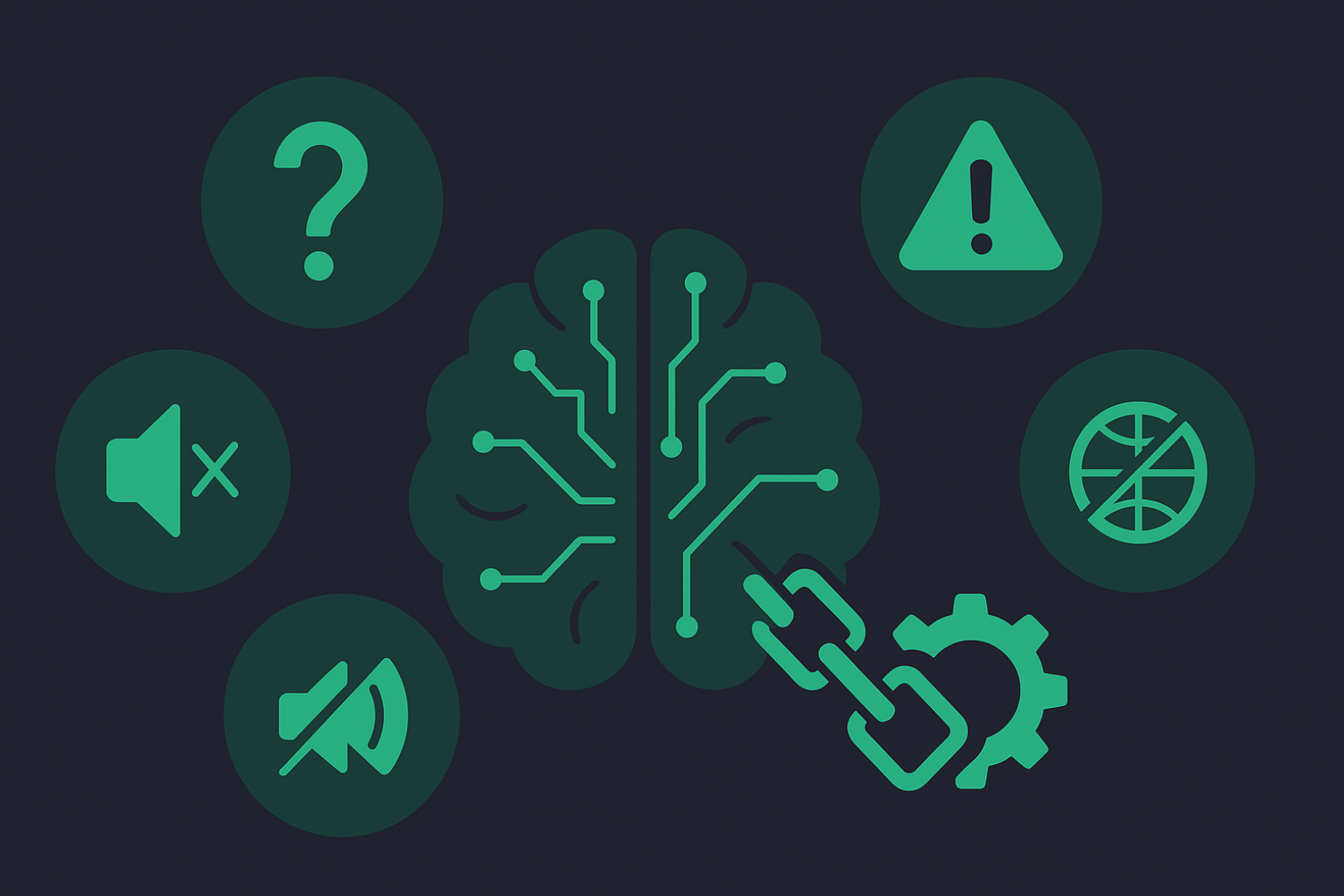sweetheart in no-code market With over 2.5 million users, the bubble.io is today, without a doubt, the reference when it comes to code-free Web Software development.
The platform allows application creation and complete end-to-end systems, from front-end design to database structuring, all without leaving the tool.
In 2022 the Bubble.io captured U$D100,000,000 which proves that investors are also enjoying what they are seeing and that the platform is preparing for accelerated growth of the no-code market.
Discover our Free Bubble Course
If you've heard about the Bubble.io and no-code but you don't know the tool in depth or even if everything I'm talking about here is new to you, stay with me until the end of this tutorial and I'll show you everything you need to know about this platform that has been revolutionizing the way we create applications.
Table of Contents
What is Bubble.io?
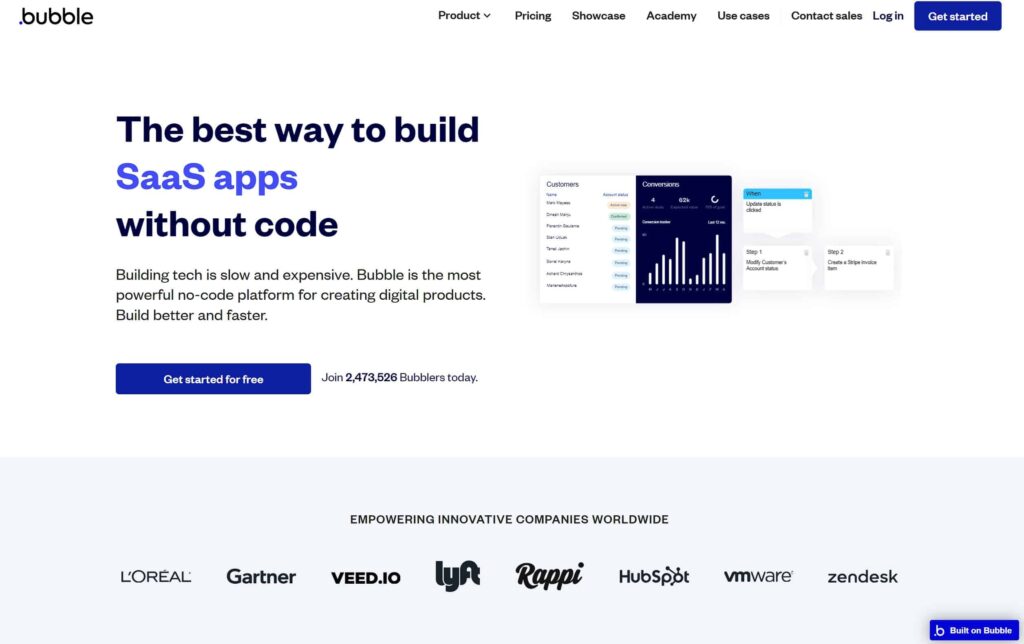
Before platforms like Bubble.io came along, anyone who had a technology idea but lacked technical knowledge in coding and programming would have to turn to third parties for that development.
Whether resorting to a programmer partner, who should be willing to risk your business in exchange for a percentage of the company, or to freelance developers or agencies, which, in addition to involving a high initial investment, would charge extra amounts for maintenance and new changes.
And you can be sure that at the beginning of a project like this, what will happen most are changes after the product goes to market.
These were the main problems identified by its founders when they decided to build the company. Today Bubble Io is one of the main no-code tools when it comes to web application development.
Companies around the world already use the platform as their technology. Development agencies have specialized in no-code, use the tool as their main development platform and thousands of freelancers already offer their development services in Bubble.
With the high demand for developers worldwide and the scarcity of these professionals due to the time it takes to learn a programming language. A no-code developer profession has been growing at incredible levels.
And Bubble can be a great starting point for your journey.
History of Bubble io
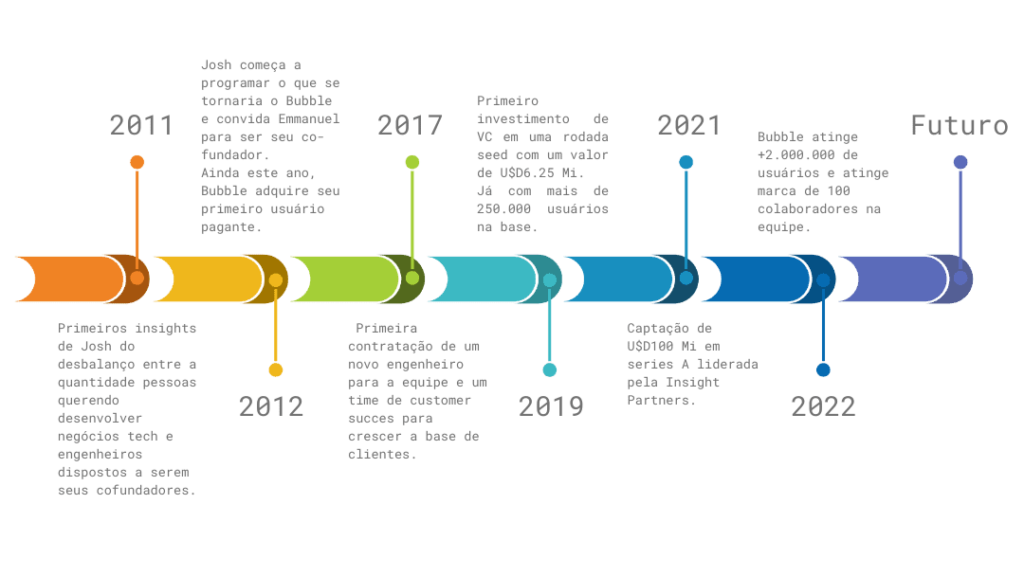
Josh Hass, a graduate of Harvard in philosophy and self-taught in programming, and Emmanuel Straschnov, a Harvard student with a desire to be an entrepreneur in the technology market, identified some pains in the market in 2012:
- Large gap between the number of engineers and the number of people who wanted to found companies
- Lots of people with a desire to build a digital startup, but most of the time they don't have the technical knowledge to create their product.”
From these pains they had the insight:
What if there was a platform where anyone with an entrepreneurial goal could build their startup without a technical co-founder?
Thus arises what we know today as Bubble.io.
As a curiosity: Brazil today is the second largest market for Bubble io in numbers of users and paying users.
Main Features and Differentials of Bubble.io
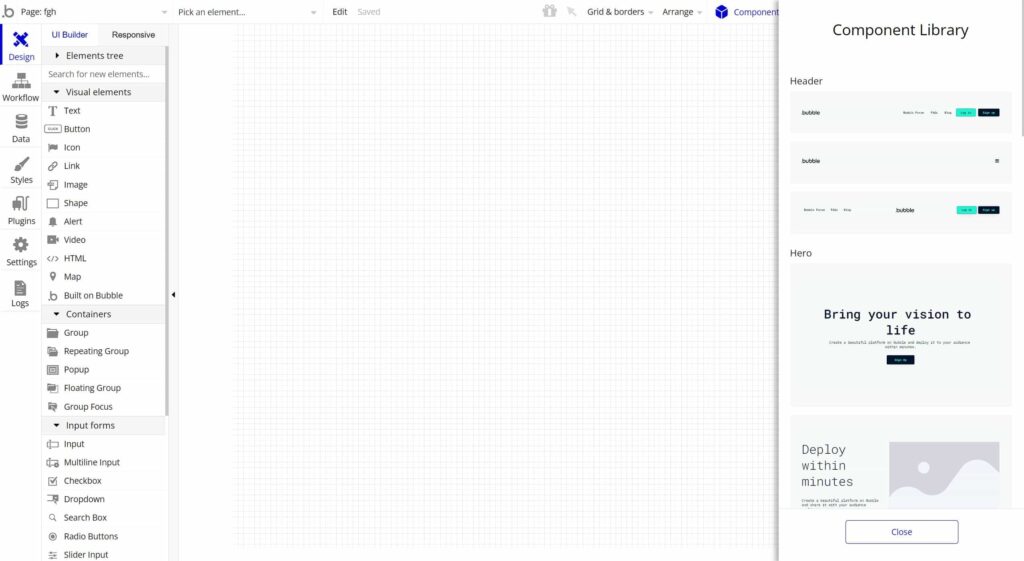
Bubble io allows the development of apps and softwares using a drag and drop interface, that is, in which you drag and drop elements on the screen and adjust them visually.
This makes the development much more friendly to people who don't have any technical knowledge, but without leaving anything to be desired in terms of flexibility and quantity of features.
Considered today one of the most powerful no-code platforms on the market, Bubble io's great advantage is that it allows the construction of complete apps without the need to use another tool.
Making it possible to create the design, logic and database internally within the platform.
With her:
- We can create designs that are highly flexible and scale to mobiles, tablets and desktops with ease.
- We were able to create extremely complex logics if necessary, both with client-side and server-side actions.
- We can create the entire backend of our application within the platform.
- In addition, we can also easily integrate Bubble with any other system through its no-code interface for API connections.
Bubble io also offers an extensive library of plugins, used to expand its functionality and the limits of what is possible to be done with the tool.
- Plugins that allow creating graphics
- custom alerts
- Simplified integrations with payment methods
- Among thousands of other applications
In addition to plugins, the platform also has a large library of free and paid templates, which can be used as a great starting point for your projects.
In fact, one of its biggest differentiators is this great community and ecosystem that was built around it. Today, several companies have all their revenue based on this ecosystem. Whether selling plugins, templates or projects made with Bubble.
This is something that really only builds over time and is undoubtedly a big advantage of Bubble io over new tools that come out on the market.
Considerations about the platform
With all the power and flexibility that Bubble.io provides, there's the price of a higher learning curve to master the fundamentals of the tool.
Of course, it is a curve that cannot be compared with learning a programming language, but it is a point for you to take into account when deciding to learn a no-code tool.
Another point to keep in mind when choosing Bubble.io with technology is that today it focuses on the development of applications and Web systems, that is, systems that we access through the browsers of our computer or cell phone.
With standard functions that Bubble io provides us, we cannot create applications called “native apps”, those apps that we download from the AppStore and PlayStore.
To get around this and transform our Bubble applications into native apps, we need to use some third-party services that do this transformation.
Point to take into consideration, because if your main objective is indeed to create a native application for apps stores, use a more specialized tool for apps development such as flutterflow platform, may be a better option.
What can we do with Bubble.io
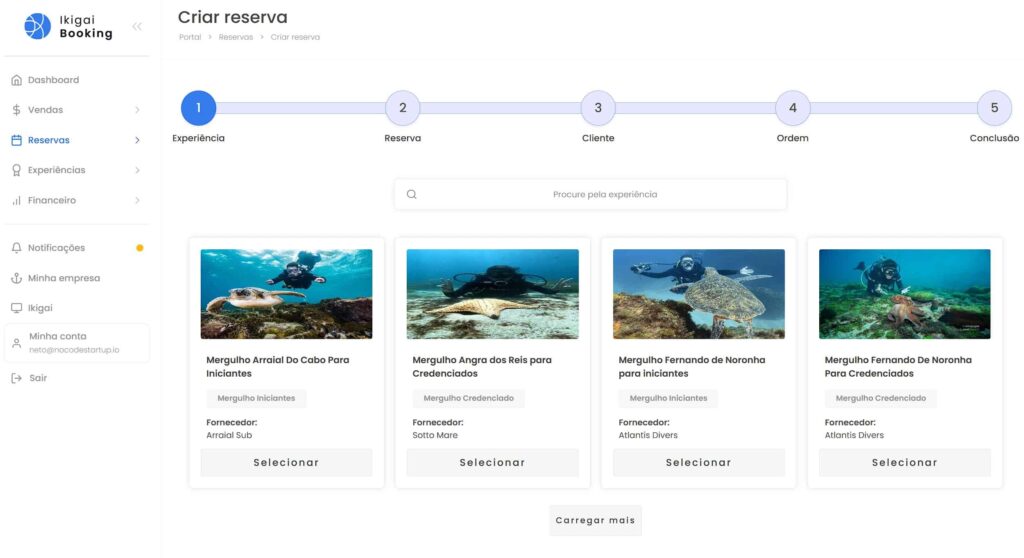
Well, we already know that Bubble Io is a powerful tool and we know what to look for when considering using it as a technology.
But what is actually possible to do with the Bubble io tool?
Taking the points I mentioned earlier into consideration, we can indeed make almost any type of app with Bubble io.
The flexibility of its client-side and server-side logics are incredible, when integration with other apps is necessary, we can easily integrate them via API and we can even resort to plugins or even add code scripts if necessary to expand its functionality.
Citing some example projects created with Bubble, we have:
- Job portals – Example project: GoodGigs
- Billing generation systems - Example project: income
- Coliving marketplaces – Example project: HackerHouse
- Scheduling systems – Example project: Ikigai Experience
Among thousands of other applications for ERP projects, Dashboards, delivery systems, social networks, etc...
Prices for using the tool
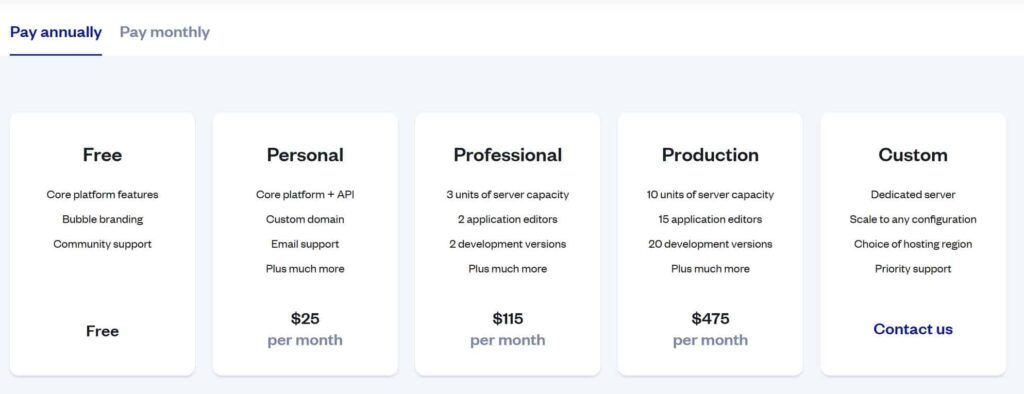
Bubble currently offers 5 possible plans for its users.
A very generous free plan, with which we can create almost any application and only pay when it's time to go to market.
The free plan contains all the main features of Bubble, but does not give you access to:
- backend actions
- Open app data API to be consumed by other systems
- Limit of 200 records in the database
- Inability to create a custom domain and remove the Bubble watermark
As for the personal plan that comes out to the U$D25, all these limitations are removed.
In the professional plan for U$D115, we gain access to more development versions, greater capacity and developer accounts.
On the production plan by U$D475, more access to development versions, capacity, and developer accounts.
If you want to know how to perform the data modeling and optimize your bank, see more in our contents.
In the Custom plan, according to the needs of your company.
How to Learn Bubble io and NoCode
In fact, Bubble is a super complete and powerful tool, if you are interested in learning more about the tool, we strongly recommend the free bubble course from NoCode StartUp, in which you will take your first practical steps with the tool, creating your first application and learning good development practices, a real treat for beginners.
If, after the course, you understand that Bubble is the skill you were looking for, be sure to learn about the complete formation in Bubble from NoCode StartUp.
Where you will learn how to create much more robust apps to greatly improve your apps creation skills and start making money with this new super skill.
What is Bubble io?
Bubble io is a no-code tool for creating web applications. With it we can create applications and softwares without having to touch code.
Today Bubble is one of the largest no-code platforms on the market, leading innovation in the segment.
How can I learn Bubble io?
The best way to learn the tool is by creating projects with it, whether real or fictional.
No-Code Start-Up has a free beginners course, in which you will create your first app with Bubble io.
To deepen your knowledge we have our complete bubble io course
